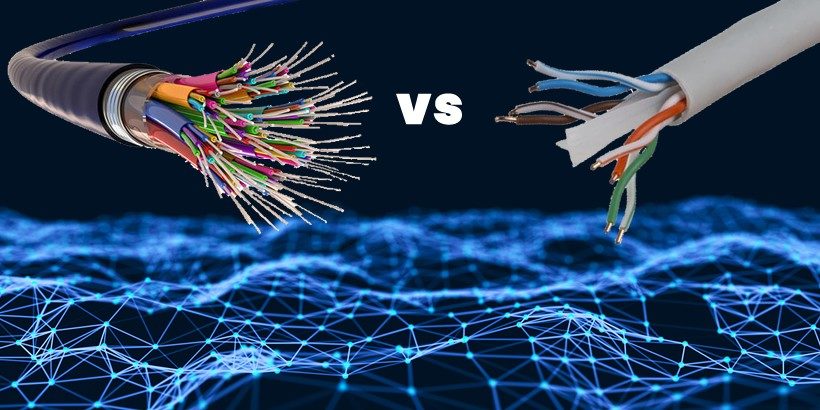Difference Between Fiber Optic and CAT6 Cabling
Both Cat6 and fiber optic are very popular cabling solutions for VoIP and business or home automation installations. Both of them offer reliable connectivity, but many people don’t actually know what’s the difference between the two of them.
If the speed and reliability of your internet connection is important for you, then you must definitely need to know what the differences are.
Let’s find out!
What is Cat6?
Cat6 or cat-6 is short for Category 6 cabling. It is basically a standard cabling solution for Gigabit Ethernet connectivity that is backward compatible with Category 5/5e and Category 3 cable standards.
The standard of Cat6 cable offers performance of up to 250 MHz. This is way better performance than the Cat 6 or Cat 5e which went to about 100 MHz.
Types of Cat6 Cables
Cat6 cables are made of twisted pairs of copper cables. These can work on cables of up to about 330 ft long. Cat6 supports 10/100/1000Base-T Networks and even 10GBase-T Networks but only up to 164 ft.
The brother of Cat6 is Cat 6A which goes a bit further offering support for 10GBase-T Networks up to 330 ft.
Pros
- Faster than Cat5 and Cat5e
Downsides
- Susceptible to electromagnetic interferences
- Shorter max distance than fiber optic
What is Fiber Optic?
Also known as optical fiber, the fiber optic cable is quite different from the Cat6 cable. For starters, the optic fiber technology is much younger than the cat6 and it uses superior transmitting options. The fiber optic cable is powered by light instead of electrical power and uses this to transmit signals at a lightspeed.
The reason why Fiber Optic cables are so awesome is because they use the fastest transmission system known by man, the light. The light travels with a speed of 186411 miles/s which is extremely fast and that’s actually how fast the data will travel through the fiber optic cables.
The fiber optic cable is not only fast, but much better in terms of transmitting cleaner signal on large distances without losing signal.
The distance and speed limits on optical fiber depend on the type of optical fiber used.
Types of Optic Fiber Cable
- Single Mode Fiber
- Gigabit up to 3.2 miles
Used for the backbone of the home cabling.
- Multi Mode Fiber Cable
- Gigabit up to 1880 ft
Used mostly to connect media rooms or rooms that require fast internet speeds and include a lot of media devices.
Pros
- Superior speed
- Better for long distances
- More reliable connectivity with no loss of signal
- No electromagnetic interferences
Downsides
- Requires an expert to build a future-proof cabling strategy
Which One to Choose?
There’s no doubt that Cat6 is superior to old Cat5 cables. However, fiber optic cabling is much preferred by home automation integrators because it offers superior speed and it doesn’t lose signal on longer distance connectivity.
Our recommendation, if you are on Cat6 is to switch to fiber optical cables because they offer a more reliable connectivity and faster internet speeds with no interruptions.

